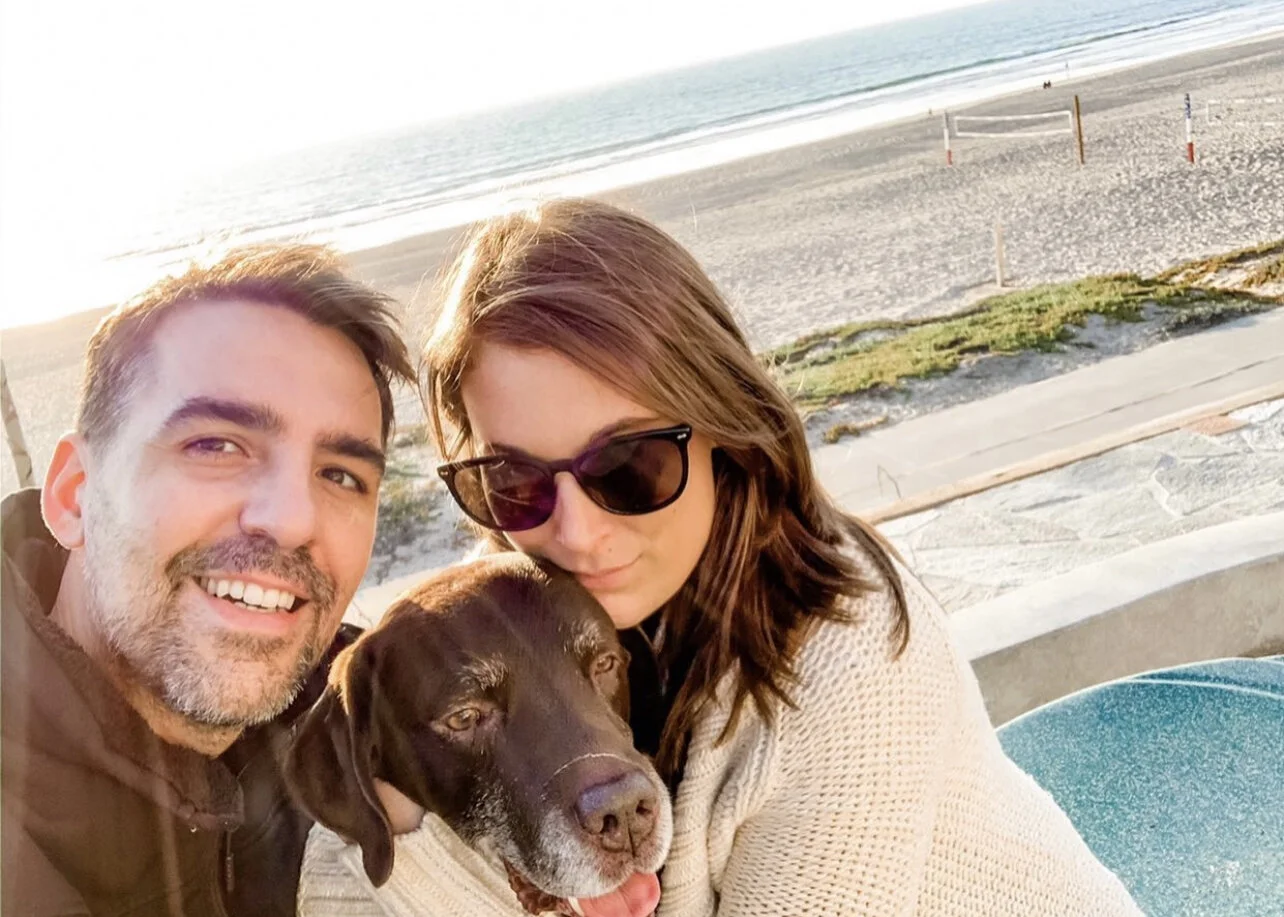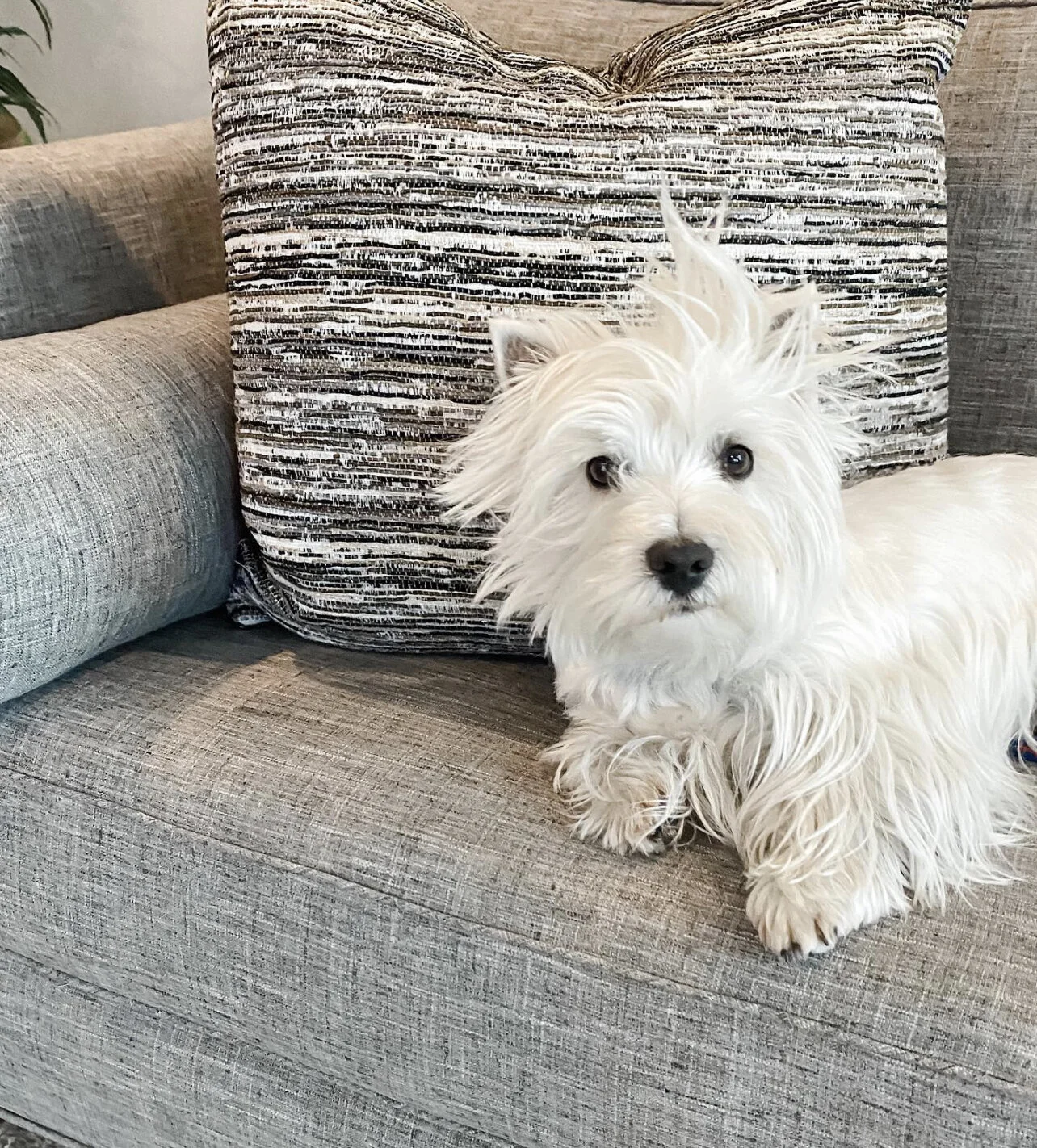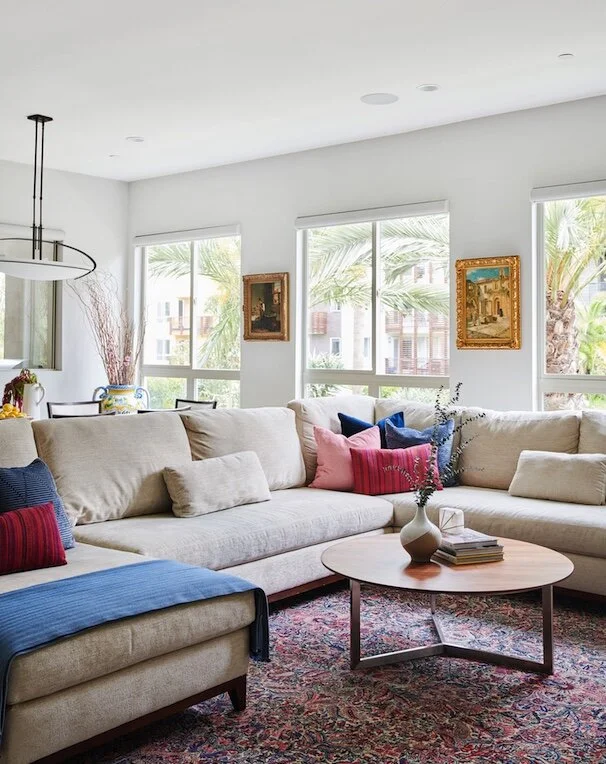Guest Post by Kathia Emery, NWSID
Kathia Emery owns Emery & Associates, a design and decorating firm based in Portland, Oregon. She has worked throughout the Pacific NorthWest, California, and Hawaii. A design veteran of 35 years, Kathia says that pets are a significant consideration in most of her clients' projects.
Designer Kathia Emery with grand-dog, Rudy.
Photo copyright: Emery & Associates.
You can have great interiors with kids and pets if you take into consideration during your planning stages the special challenges posed by living with the little critters. Here are some of the ways I’ve discovered through my own experience and that of my clients.
For Colors, Think Medium Tones. Very dark and very light solid colors show a lot more dirt than medium tones. A couple with no children and no pets, who don’t serve a lot of red wine at parties, can get away with all white sofas. You can’t, unless it’s white leather, and then only if you have children and dogs past the teething stage (cats have been known to shred leather). Light colored flooring shows every footprint and Playdoh dropping, but hardwood flooring in a medium tone stain (not bleached, pickled or stained very dark) hardly shows any dirt and costs about the same as the highest quality inlaid vinyl. Medium-toned fabrics and carpeting show less lint and pet hair than very dark ones, so stay away from solid navy, forest green, burgundy, and black for broadloom carpeting or you will be vacuuming every day.
Sample mood board for planning an interior design. Photo copyright: Emery & Associates.
For Fabrics and Carpeting, Think Pattern. Patterned fabrics, especially random, all-over patterns, are my favorites for hiding slobber, stains and spills. Slipcovering your sofas and chairs in medium to dark background patterned fabrics is the most practical kind of seating to have—when the dirt finally does start to be apparent, you can remove the slipcovers and launder or dry clean them. Although the current generation of nylon broadloom carpeting resists stains so well that even pet accidents and muddy footprints can be cleaned up quickly and easily, my all-time favorite carpets for hiding the kind of hard wear kids and animals do to floors are Oriental rugs. Before you insist you can’t afford them, compare what you would spend for broadloom, and then multiply it by the number of times you will have to replace that broadloom. Then compare the figure to what an Oriental rug costs. I’m sure you will realize they make wonderful lifetime investments and can be passed on as heirlooms to your children. Because they are portable, they can move with you; they can go over broadloom carpeting or on bare wood or tile floors. I even have one in my kitchen in front of the sink (over my hardwood floor). The ornate patterns hide dirt, dust, spills, and make dog bones look strangely at home! When they finally need a good cleaning, you simply roll them up and take them to the rug cleaners.
For Walls, Think Vinyl. I know, I know—it’s not classy to live with plastic, but for families with little jam smearers it will repay you many times over to install beautiful vinyl wallcoverings rather than paper or paint. Don’t ever put grasscloth or any organic, textured wallcovering on your walls if you own cats; something about these textures seems to cause otherwise sedate felines to commit violent acts of vandalism. Not all wallcoverings need to be patterned as long as they are washable vinyl or vinyl coated. Wallpapers come in a wide variety of washable textures, from fine and filmy to coarse and homespun, which add richness to your room without adding pattern.
Kathia’s husband, Jim Kahan, who makes the BEST cat furniture! Photo copyright: Emery & Associates.
For Windows and Accessories, Think “Above Their Heads.” Except for cats who enjoy climbing up draw draperies, most window treatments and accessories are impervious to children and pets if they are above windowsill height. If you know your cat is a curtain climber, substitute another form of window treatment, either Roman shades or blinds. Newer blinds and shades are mostly cordless these days, but if you have window treatments with cords that hang down remember to clamp, clothes pin or tie the cord to itself to prevent toddlers and pets from becoming entangled in or chewing the cords. Patio door windows are continually smudged if you have toddlers (or dogs who think it’s entertaining to catch flies). The only solution I’ve found to this dilemma is to gate off the room, or to install deep louvered shutters (my Airedale dented the daylights out of metal miniblinds, but so far the painted shutters remain unscathed).
Art and accessories need to be above windowsill height. Toddlers are usually incapable of keeping their hands off things that interest them, so don’t even try to keep your beautiful objects displayed on the coffee table or floor until the child is developmentally ready. However, if you can’t put your porcelain on the coffee table, you can display an Oriental screen on a sofa table or hang anything you love on your walls. Toddlers and pets might nibble on small house plants, but large tree-like plants in tall baskets have more impact anyway and are kid and pet-proof. Just to be safe, wedge chicken wire into the pit over the soil of any indoor plan to keep cats from thinking it’s another litter box.
Just because you have young children or pets doesn’t mean you need to sentence yourself to a life without style. Is there anything more appealing than a tabby cat curled up on a chair cushion, or a puppy asleep in a basket in front of the fire? You already value the warmth and coziness that children and pets bring to a home, so go for the rest of it! You can have great style and kids and pets, too!
Original art by Kathia Emery featuring her dearly departed Labrador, Emma. Artwork property of Kathia Emery.










